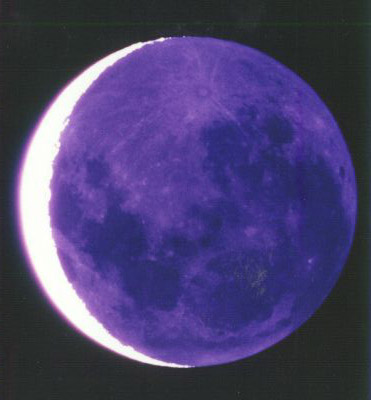Introduction
Contents
[hide]- 1 THE MOON-WIKI (an exploration of the strange highways and byways of SELENOGRAPHY)
THE MOON-WIKI (an exploration of the strange highways and byways of SELENOGRAPHY)
Expanded ABC of Named Lunar Formations - foreword
A B C D E F G H I J K L M N O P Q R S T U V W X Y Z
Motivation (read: PERSEVERANCE, DETERMINATION, and COURAGE) (even when the end is approaching)
During the late 1800s and well into the 1900s it seemed that every book that described the craters, mountains and other features of Earth's moon was titled The Moon. In my mind this came to stand for an encyclopedia-like series of descriptions of features on the lunar surface. In general, more recent books, especially those by professional scientists, describe the processes that formed and modified the Moon, and the surface features themselves are no longer described systematically. But for many lunar observers and others thinking about the Moon as a place, knowledge of individual features is important.
This wiki THE MOON (or rather: THE LESS-KNOWN MOON) is an adventurous exploration. It is an experiment to collect data about individual features, arranged alphabetically by name. As a wiki-contributor anyone (after registering) can add or edit every entry. I encourage folks interested in the Moon to contribute to the site.
If you feel that you are ready to add to THE MOON visit the How to Help option to the left. It turns out that this wiki is the most convenient way to find all the information of any named lunar feature! (and also unexpected subjects, more-or-less moon related).
Contributors & Contributions in THE MOON-WIKI
| Earthshine - Greg Redfern |
Mark Tillotson and Jim Mosher have completed adding basic coordinates, crater diameters, and Elger text using a template created by Jim.
Paolo Amoroso collected most of the Clementine orbiter's close-up photographs of IAU-named surface formations.
Danny Caes (not quite petite profile) has contributed information on orbital Apollo photos showing specific features, peculiar lunar surface formations (observable through telescopes), and subtle colors on the moon's surface. Member of Wikispaces (Moon-Wiki) since September 13th, 2007.
Aleksander Božič (SandiBandi) discovered lots of unexpected surface details, mostly detected on the ACT-REACT Quick Map (LROC, Lunar Reconnaissance Orbiter Camera).
Patricio Leon (Nunki) has contributed much more information on orbital Apollo photography (of previously unknown lunar regions captured on not plotted Hasselblad frames). Much of Patricio's discoveries are mentioned in Unknown lunar regions on orbital Apollo photography.
John Moore created additional LPOD-related pages (Miscellany 1, 2, 3, and 4) full of interesting information and images. John also brings us the most recent news about the IAU's named lunar formations, such as the craterlets in the neighborhood of the Chang'e-3 landingsite at the northern part of Mare Imbrium.
Andrew Martin created a comprehensive list of moonbooks for kids and youngsters.
There are still many types of work that need to be done to add content to THE MOON:
(1) Add images from LPOD Photo Gallery or other sources (where legal!).
(2) Add links to references in NASA ADS or elsewhere online - BIG NEED FOR THIS!
(3) Write your own descriptions of observed features - and sign them too - NEEDED TOO!
(4) Add other facts to the Additional Information field.
(5) Add unofficial names/ nicknames to the observed and photographed/ webcammed features!
So far this wiki has concentrated on basic image and descriptive data, now we welcome additions of many other types of data, including geochemical and geophysical.
Lunar People
On July 20th, 2007 (Apollo 11 Day) a collection of photos of 200+ lunar scientists from the immediate post-Apollo period were added - see the Warner Collection link at left. With this the-Moon Wiki expands from documenting the lunar surface to also preserving information about the people who study it. Please contribute additional images and text covering all periods of lunar history from Galileo and Harriot onward.
Quality
THE MOON - WIKI intends to be a creditable web resource. I have a long professional association with lunar science - see my bio and will review as much as possible. Also, each contribution here is meant to be signed by its author and referenced back to the original data source. None-the-less there will be some errors - when you find them please use the wiki editing capability to make corrections.
Thanks,
Charles A. Wood
About the photographs on this page:
- Photograph at right: South-Up view of the moon's Waxing Crescent with nocturnal hemisphere's Ashen Light (retro-reflected light from the white clouds and sunlight-reflecting oceans on the bright Waning Gibbous Earth) captured by Greg Redfern (note the Irradiation effect of the bright lunar crescent, as if the crescent is larger than the Earthlit part of the moon's globe) (this is an optical illusion described by M.G.J.Minnaert in his classic Light and Color in the Outdoors). The southern extension of the moon's Waxing Crescent was hot topic among many moon observers of the preceding centuries. Some thought they observed an "extra" illuminated mountain peak near the moon's southpole, or even traces of some sort of lunar atmosphere (perhaps some kind of ejected gaseous substance, the same phenomenon as on certain moons around Jupiter and Saturn, and on comet nuclei). The tiny bright dot at the lower-right part of the moon's globe is the high-albedo ray crater Aristarchus, once a so-called "erupting volcano" (according to Herschel). The remarkable system of rays near the upper part of the globe belongs to the prominent crater Tycho (once seen as some sort of "south pole" according to French selenographer Felix Chemla Lamech).
- Icon photograph (upper left corner): North-Up view of the Full Moon, captured by Elias Chasiotis, Markopoulo, Greece. Note the abundance of low-albedo mare regions in the western hemisphere of the moon's near side.
